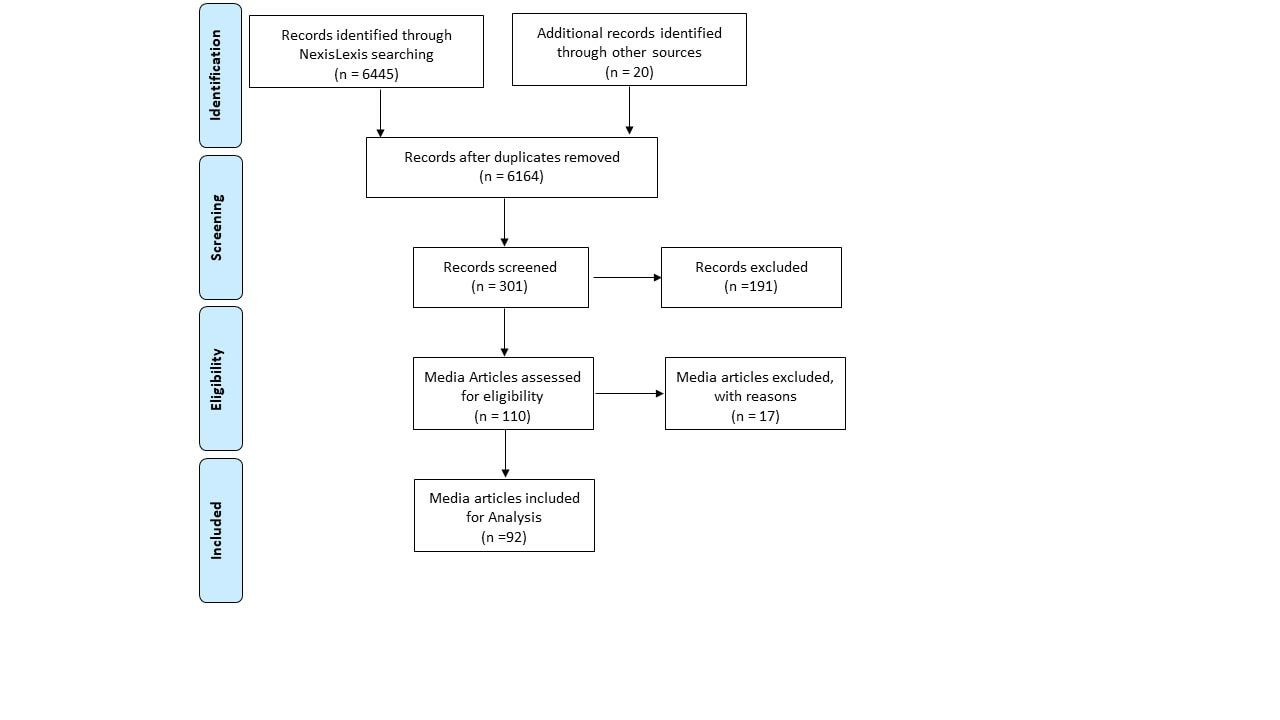|
Louise Hoyle, University of Stirling [Article: Hoyle, L. P., Smith, E., Mahoney, C., & Kyle, R. G. (2018). Media Depictions of “Unacceptable” Workplace Violence Toward Nurses. Policy, Politics, & Nursing Practice. https://doi.org/10.1177/1527154418802488.] I have an interest in how the media reports issues that focus on healthcare in the UK. I am always keen to understand particular issues are framed by the media and how this can influence the perceptions of the general public. For example, I worked with Dr Aimee Grant to look at print media representations of UK Accident and Emergency Treatment Targets (Grant & Hoyle 2017). Also, in previous work, I looked at how nursing staff viewed the impact of mass media has on service users and what this means for interactions between nurses and service users (Hoyle, Kyle & Mahoney 2017). Media framing exerts a clear influencing on the public’s perceptions of healthcare professionals and services and so healthcare professionals need to understand the messages that the general public receive and to consider how health stories are reported. Following this research I therefore thought it would be interesting to see how the Scottish Media reports cases of violence and aggression towards nursing staff in Scotland. Being a registered nurse and having worked within acute hospital settings, my research as an academic focuses on violence, aggression, bullying and harassment within nursing. So, we decided to undertake a thematic analysis of newspaper articles reporting incidents of violence and aggression within Scotland between 2006- 2016 (a ten-year period). The articles were identified by searching NEXIS® and BBC News online. Much of what was done is similar to the way the Grant & Hoyle (2017) paper was carried out (discussed in Grant, 2018). However, within this blog I want to talk about two key elements of the research reported in Hoyle et al, (2018), first is the use of the PRISMA checklist (Moher et al. 2009) within the identification of the papers and secondly, in using the Standards for Reporting Qualitative Research (SRQR) guidelines (O’Brien et al. 2014) to aid in the write up of the project. The Use of PRISMA PRISMA (Preferred Reporting Items for Systematic Reviews and Meta-Analyses) (Moher et al. 2009), was adapted for the purposes of undertaking the search for articles on violence and aggression within the media in Scotland. PRISMA was originally developed as a basis to aid the reporting of systematic reviews and other types of research. There is a 27-item checklist and a flow diagram for displaying the search and selection strategy of papers (http://www.prisma-statement.org/). In the article we were not undertaking a systematic review or meta-analysis, but it was felt that some of the principles from PRISMA help with the reporting of the newspaper articles and display of the search. What was of most interest is the flow diagram that is provided by PRISMA (Moher et al. 2009). It is this flow diagram that can enable researchers to record their search in a clear way. It was this that we used within our own study looking at violence and aggression reporting in print media. This allowed us to display our newspaper search strategy in a clear way which makes it accessible for readers (Figure 1). We then used the Standards for Reporting Qualitative Research (SRQR) guidelines (O’Brien et al. 2014) to report the qualitative results from this study. This provides a checklist to ensure that there was transparency when reporting study findings. It is considered good practice to use such guidelines when writing up studies, and often this is now a requirement for publishing in journals in the health and medical sciences[1]. The SRQR asks the authors to ensure that certain elements are included within the write up of the study; this is where these elements were reported in our article. Adhering to such guidelines is good practice when writing up a study and ensures that you are reporting the all elements that are required in order for someone to make a judgement about the quality of the research.
Readers interested in the study and the SRQR procedures are most welcome to contact me by email: [email protected] References: Grant, A. (2019). Doing excellent social research with documents. London: Routledge. Grant, A., & Hoyle, L. (2017). Print media representations of UK Accident and Emergency treatment targets: Winter 2014-2015. Journal of Clinical Nursing2 6(23-24), 4425-4435 DOI:10.1111/jocn.13772 Hoyle, L. P., Kyle, R., & Mahoney, C. (2017). Nurses’ views on the impact of mass media on the public perception of nursing and nurse–service user interactions. Journal of Research in Nursing, 22(8), 586-596 DOI: https://doi.org/10.1177/1744987117736363 Moher, D., Liberati, A., Tetzlaff, J., Altman, D. G., PRISMA Group (2009). Preferred reporting items for systematic reviews and meta-analyses: the PRISMA statement. BMJ (Clinical research ed.), 339, b2535. DOI: doi:10.1136/bmj.b2535 O'Brien B. C., Harris I. B., Beckman T. J., Reed D. A., Cook, D. A. (2014). Standards for reporting qualitative research: a synthesis of recommendations. Academic Medicine, 89(9), 1245-1251. [1] The EQUATOR Network (https://www.equator-network.org/reporting-guidelines/) provides an overview of reporting guidelines for the main study types. Biography Louise Hoyle is a registered adult nurse (RN) and a lecturer in nursing at The University of Stirling. Louise has research interests in the fields of: workplace violence and aggression, the working conditions of nurses, the health & wellbeing of nursing workforce, and health reporting in the media. Louise has a PhD in Sociology & Social Policy and MScs’ in Criminology and Applied Social Research.
0 Comments
|
AuthorMembers of the Documents Research Network Archives
June 2019
Categories |


 RSS Feed
RSS Feed
